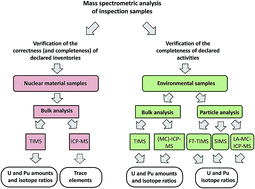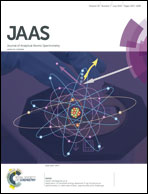Mass spectrometric analysis for nuclear safeguards
Abstract
Mass spectrometry is currently being implemented in a wide spectrum of research and industrial areas, such as materials science, cosmo- and geochemistry, biology and medicine, to name just a few. Research and development in nuclear safeguards is closely related to the general field of “Peace Research”, representing a specific application area for analytical sciences in general and for mass spectrometry in particular. According to Albert Einstein “peace cannot be kept by force. It only can be achieved by understanding”. Understanding implies a realistic estimation of potential challenges and threats, which is based on the ability to obtain timely, reliable and independent information. A particular task of international nuclear material safeguards is reducing threats that are posed by the proliferation of nuclear weapons. An important part of the International Atomic Energy Agency (IAEA) safeguards system is the “analytical laboratory”, with mass spectrometric techniques, such as thermal ionization mass spectrometry (TIMS), secondary ion mass spectrometry (SIMS), and inductively coupled plasma mass spectrometry (ICP-MS) belonging to the most powerful methods for the analysis of nuclear material and environmental samples collected during inspections. Each of the currently applied techniques provides definite merits (e.g. precision, accuracy, time-effectiveness, high sensitivity, spatial resolution, reduced molecular interference, etc.) for a specific safeguards related application. Thus, taking advantage of each technique helps the analyst to gain a larger quantity of safeguards-relevant information. Along with the analysis of element amounts and isotopic compositions of uranium and plutonium in nuclear material the challenging applications of mass spectrometry include isotopic analysis of micro-samples, age determination of nuclear material as well as identification and quantification of elemental and isotopic signatures of inspection samples in general. Analysis of inspection samples implies strict quality control procedures and it demands the production of suitable certified isotopic reference materials which are used as calibration standards or as quality control samples. This manuscript discusses merits and limitations of presently available mass spectrometric instrumentation for such safeguards applications. It will also highlight the need for further improvements in TIMS, ICP-MS and SIMS performance aimed at obtaining more specific and significant isotopic information.


 Please wait while we load your content...
Please wait while we load your content...